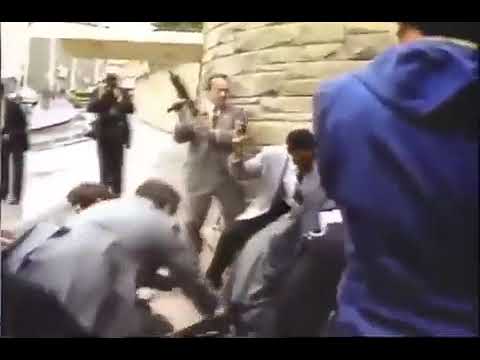
How the Secret Service reacted in 1981 when Ronald Reagan was shot compared to Trump shooting 2024
The United States Secret Service is essential in ensuring the safety of the President. Over the years, this agency’s strategies, agent selection, and public perception have evolved significantly. This article compares two pivotal incidents: the assassination attempt on President Ronald Reagan in 1981 and a recent security breach involving President Donald Trump. By examining these events, we can discern how the Secret Service’s tactics, agent profiles, and public perceptions have transformed over the past four decades.
Video Comparisons
To illustrate the differences in Secret Service operations, we will examine video footage from both incidents.
Reagan Shooting (1981)
Trump Shooting (2024)
Response Analysis
Analyzing the response times and actions taken by the Secret Service in each incident reveals significant differences:
Reagan Shooting
- Response Time: Agents reacted within seconds of the first shot, quickly forming a human shield around President Reagan.
- Actions Taken: Immediate evacuation to the limousine, agents physically covering the president, and rapid neutralization of the shooter.
- Effectiveness: The swift and coordinated response minimized harm to the president and bystanders.
Trump Shooting
- Response Time: Initial hesitation was observed in some agents nearly 2 minutes before the attack, with over a minute delayed reaction compared to the Reagan incident first having eyes on the shooter.
- Actions Taken: Efforts to shield the president and evacuate him to a secure location.
- Effectiveness: While ultimately effective, the response appeared less coordinated and decisive.
Agent Profiles
Examining the backgrounds, training, and physical attributes of the agents involved highlights significant changes over the years:
1981 Agents
- Backgrounds: Predominantly male, with military or law enforcement backgrounds.
- Training: Focused on physical fitness, combat training, and crisis response.
- Physical Attributes: Emphasis on physical strength and agility.
2024 Agents
- Backgrounds: More diverse, including women and individuals with varied professional experiences.
- Training: Enhanced focus on psychological training, diversity, and inclusion, alongside traditional physical and tactical training.
- Physical Attributes: Broader range of physical attributes, reflecting diversity initiatives.
Impact of DEI Policies
Diversity, equity, and inclusion (DEI) policies have influenced the composition of the Secret Service detail.
Benefits
- Diverse Perspectives: DEI policies bring a range of perspectives and approaches to problem-solving and crisis management.
- Inclusivity: Promotes a more inclusive work environment, potentially improving morale and retention.
Drawbacks
- Physical Demands: Certain roles, particularly those involving close protection, may require specific physical attributes that are not equally distributed across all demographics.
- Performance Perception: Public and internal perceptions of effectiveness can be influenced by visible diversity, sometimes unfairly attributing performance issues to DEI initiatives.
Public Perception and Criticism
Public reactions and criticisms from both periods reflect evolving perceptions of the Secret Service:
1981 Reactions
- Public Praise: The swift and decisive actions of the agents were widely praised.
- Media Coverage: Positive coverage highlighting the bravery and professionalism of the agents.
2024 Reactions
- Public Criticism: Mixed reactions, with some praising the agents’ bravery and others criticizing perceived hesitation and lack of coordination.
- Media Coverage: Diverse opinions, with debates about the impact of DEI policies on performance.
- Recent Tweets:
- FirstAmendmentTam (@tsofiac): “She looks like Melissa McCarthy playing a SS agent in some madcap comedy show.”
- mikeymumbelz (@mikeymumbelz): “I think he needs to hire an independent security firm. The fact the Secret Service didn’t have a person on every rooftop is a major red flag.”
- Eric Cook (@Greentownmayor): “This is what DEI looks like. Holstering a weapon should be strictly muscle memory if you are trained properly.”
- Earth Resident (@JosephLeve): “Women should not be in these roles.”
Conclusion
The comparison between the Reagan shooting and the recent Trump incident reveals significant changes in the Secret Service’s operations, agent profiles, and public perceptions over the past 40 years. While diversity and inclusion initiatives have brought valuable perspectives and improvements, they also pose challenges in roles that require specific physical attributes. The key takeaway is the need for a balanced approach that ensures both inclusivity and effectiveness in protecting the President. By learning from past incidents and adapting to current and future threats, the Secret Service can continue to evolve and fulfill its critical mission.








